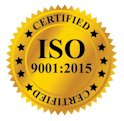|
Objective of the Course
Primary objectives of the courses are to acquire the Basic Geology and Petroleum Geology vocabulary fundamentals and general concepts. The Courses are designed to teach key terms and concepts that are essential to the oil and gas industry. Topics include: Earth structure, Plate tectonics, Mineral, Rocks and Rocks dating, Tectonic, Sedimentary basins and Sedimentary processes, Exploration applied methodology, Petroleum system assessment, Petroleum formation migration and accumulation and conventional vs non-conventional petroleum resources
What you will learn
- At the completion of the courses, you will learn:
* Fundamentals basic Geology for petroleum engineers
* About different exploration strategies
* About petroleum system and petroleum system assessment
* About source rocks, petroleum reservoirs, Seal rocks and traps and hydrocarbon migration
* The distribution of porosity and permeability in clastic and carbonate reservoirs
* Conventional vs unconventional resources
- At the completion of the fieldwork, you will know:
* Fundamentals on contour maps and how to use them on the field
* How to collect data (strike, dip and thickness), measure sections, draw up interpretative cross sections and reconstruct comprehensive models of petroleum generation, migration and accumulation.
————————————————————————-
Content
- Basic geology for petroleum engineers: A synthesis: Earth structure and plate tectonics fundamental concepts of Mineralogy, petrography, Stratigraphy, dating and tectonic, as well as concepts on Sedimentary processes and basin types.
- Earth structure and plate tectonic
- Minerals and rocks
- Geological time
- Tectonic
- sedimentary Geology applied to petroleum exploration
- Exploration processes
- Evaluation of exploration processes
- Exploration concepts
- Exploration strategy
- Petroleum System Definition and Assessment
- The petroleum system concept: Elements and processes of a petroleum system
- Naming, mapping and determining the temporal aspects of a petroleum system
- Geographic, Stratigraphic and temporal aspects of a petroleum system
- The origin of petroleum including fundamental processes of organic deposition, thermal maturation, migration of fluids.
- From living organisms to Kerogen: The early diagenetic processes of the sedimentary organic matter
- Production vs Preservation of the organic matter in the water column, development of anoxic conditions and deposition of petroleum source rocks.
- Thermal maturation and petroleum generation
- Migration of fluids: primary, secondary and Tertiary migrations
- Reservoirs: Definition, rock types and properties
- definition,
- porosity types
- porosity in sandstones
- Porosity in carbonates
- Definition, measurement
- absolute, effective and relative permeability
- Wettability in reservoirs
- Clastic and carbonate reservoirs
- Cap Rocks/Seals
- Definition.
- Properties of seal rocks: ductility, top seal, lateral seal, fault seal
- Different types of seal rocks
- Formation of the different types of traps for reservoired petroleum
- Structural traps: tilted fault block traps, anticline traps, salt dome traps
- Stratigraphic traps: angular unconformity, Reef, sand bars, pinch out
- Trap frequency and characteristics: Closure, Gross pay, Net Pay
- Hydrocarbon migration as a function of thermal maturity
- Conventional vs unconventional petroleum resources
|


